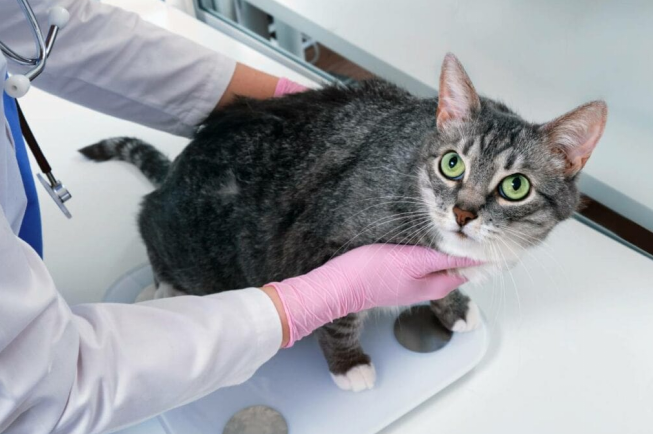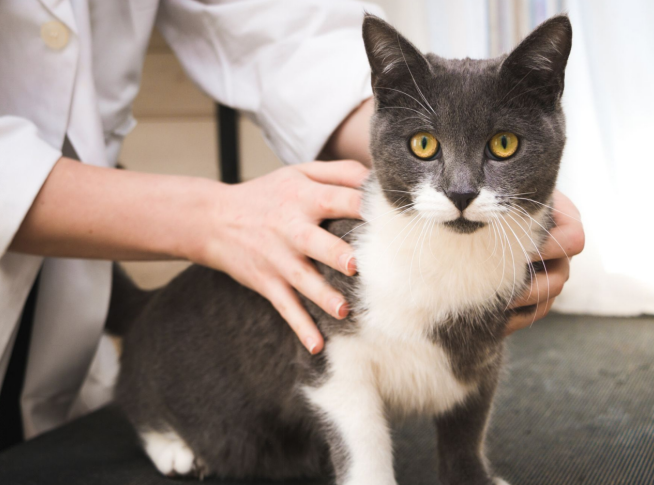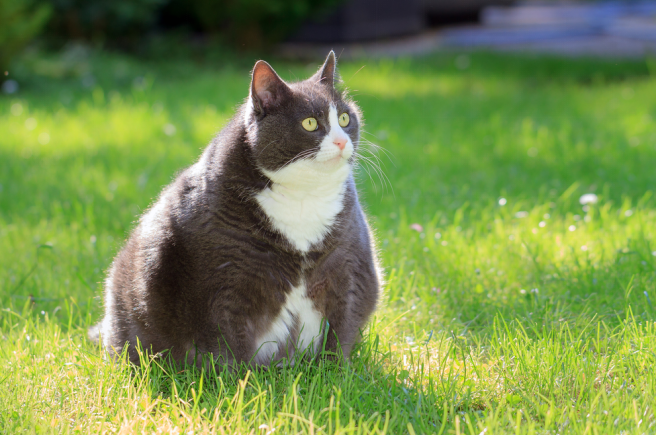
Every owner wants a healthy and happy cat, yet many struggle to judge weight by sight alone. The cat body condition score (BCS) fills that gap. This hands-on tool lets you measure the layer of fat over a cat’s ribs, spine, and waist so you can act before extra pounds—or lost pounds—turn into illness. Learning how to use BCS gives clear targets for feeding, exercise, and vet visits, and it proves more helpful than a scale alone.
Two cats can weigh eight pounds each and still look very different. Bone size, muscle tone, and hair length change how weight sits on the frame. A small-boned female with medium hair may look plump at eight pounds, while a broad-chested male with dense fur might look slim. The cat body condition score corrects for those variables by focusing on fat cover, not raw weight.
Veterinarians use either a 5-point or 9-point scale. In both systems, the middle value marks 'ideal,' low numbers mean under-fat, and high numbers mean over-fat. Below is a practical breakdown of the 9-point scale, the one most clinics in the United States favor:
|
Score |
Visual Signs |
Touch Signs |
Meaning |
|
1 |
Ribs, pelvis, and spine plainly visible; no fat layer |
Skin clings to bone |
Emaciated |
|
2 |
Slight fat loss, ribs still obvious |
Very thin fat layer |
Very thin |
|
3 |
Minimal fat; faint waist |
Ribs easy to feel |
Thin |
|
4 |
Visible waist behind ribs |
Thin layer over ribs |
Slightly thin |
|
5 |
Smooth ribs with light fat; clear waist when viewed above |
Ribs easy to feel but not sharp |
Ideal |
|
6 |
Waist less distinct |
Moderate fat over ribs |
Slightly heavy |
|
7 |
No waist; rounded abdomen |
Ribs harder to feel |
Overweight |
|
8 |
Ribs cannot be felt; heavy flank fat |
Thick pad over spine base |
Obese |
|
9 |
Distended abdomen; heavy fat on neck, legs |
Ribs buried under fat |
Severely obese |
Keep the cat body condition score chart handy and review it every month. Tag the fridge or litter area with a printout so you never forget.

You need only your hands and good light. Follow these steps:
1. Feel the ribs: Run your fingers across the side of the chest. In an ideal cat, ribs feel like your knuckles under a thin cloth. If ribs feel like bare knuckles, the cat is thin. If they feel like soft couch cushions, the cat is heavy.
2. View from above: Stand behind your cat when it is standing. Look for a slight inward curve behind the ribcage. No curve means extra fat storage.
3. Look from the side: A healthy cat has a small 'tuck' where the belly rises in front of the hind legs. A hanging pouch signals excess fat.
4. Check the spine and hips: Lightly press on the backbone and hips. In an ideal cat the bones are easy to find but not jutting. Sharp bones mean under-fat; hidden bones mean over-fat.
Record the result on a logbook. Mark the cat body condition score number, the date, and any diet changes.
Some breeds have strong bones and others have fine bones. Maine Coons often score higher at the same weight than Siamese because their frames are larger. To learn how bone size varies, explore black cat breeds for examples of build diversity.
Kittens burn calories quickly. Seniors move less and lose muscle, so fat layers can grow even if they eat the same meal. Keeping older cats hydrated also helps digestion and weight control.
Hormone shifts after a spay or neuter slow metabolism. Link your plan for sterilization in cats to a revised feeding schedule.
Dry kibble, wet food, or raw meals pour calories at different rates. Measure each serving and follow a reliable weight chart for guidance. If you worry about random snack times, use a timed feeder to limit nibbling.
Indoor-only cats need play workouts to mimic hunting. Puzzle toys, food mazes, and climbing shelves push calories out. A daily chase session might trim one point off the cat body condition score within a month.
Thyroid, kidney, or gut illness can raise or drop fat layers fast. Regular vet screens and kidney health checks protect against hidden disease.

A score of 7–9 links with diabetes, joint pain, liver problems, and shorter life span. Heavy cats struggle to groom, leading to dull coats and dandruff. They also face more surgical risk and slower healing. Obesity can start with only a few extra ounces each month, so early action saves years.
Scores below 4 mean low energy and weak immunity. Elderly cats in this group risk organ failure and poor temperature control. Parasites, mouth pain, and stress can cause sudden weight drop. Issues like pooping on the bed may point to hidden pain that kills appetite.
Minor ribs show until rapid growth fills out the frame. Feed frequent small meals and weigh weekly. Use essential health tips for fast-growing bodies.
Aim for steady muscle and fat ratios. Interactive feeders, fountains, and toys keep them lean. A well-placed cat fountain can raise water intake, which helps digestion and weight control.
Metabolism slows. Replace long hunting games with shorter sessions that protect joints. Track each month’s cat body condition score and adjust calories downward by ten percent if the number creeps up.
A clear score guides how much to scoop at each meal:
● BCS 1–3 (thin): Increase calories by 20 percent and split into four daily meals. Choose energy-dense wet food.
● BCS 4 (slightly thin): Add one extra snack such as cooked chicken bits.
● BCS 5 (ideal): Maintain current meal size. Check BCS monthly.
● BCS 6 (slightly heavy): Cut treats in half and move to a smart feeder that records bites.
● BCS 7–9 (obese): Work with a vet to form a strict weight-loss plan. Consider a low-calorie kibble and help a cat lose weight guide.
Portion control tools—like automatic feeders—prevent grazing. See how much to feed for exact measures by body weight.
A healthy routine blends food puzzles, climbing, and chase games:
1. Food puzzles: Hide kibble in a treat ball to force movement.
2. Vertical play: Cat trees let cats leap and stretch, burning calories.
3. Chase sessions: Use wand toys for ten minutes twice a day.
4. Hydration stations: Many cats drink more running water. A fountain reduces calorie-dense snacking that mimics thirst.
5. Outdoor strolls: Harness walks offer fresh sights and steady exercise.
If outdoor trips raise stress, focus on indoor routes instead. Reliable cat fountain care supports hydration after play.
Most clinics record the cat body condition score at every wellness visit. Bring your log so the vet can track trends. If BCS jumps by two points in either direction, blood tests may follow. Early lab checks spot thyroid disease, diabetes, and kidney issues before they cause irreversible damage.
Use a simple chart on your fridge. Write the date, score, weight, food type, and exercise minutes. Celebrate small wins like dropping from 8 to 7. That shift can lower diabetes risk by half. Rotate treats with low-cal snacks or freeze-dried meat to keep diets balanced.
Vacations change feeding times and may spike weight. Use a secure carrier, pack measured meals, and check BCS after travel. To reduce stress, learn how to travel by car and keep the routine as normal as possible. If boarding your pet, instruct staff on the current cat body condition score and meal plan.
Many cats nibble when they are thirsty. Encourage water intake to cut needless calories. Combine auto feeders with fountains, as shown in this smart care guide. You can also train picky drinkers with tips from how to teach fountain use.
1. Link feeding to play: Offer a short chase session before each meal.
2. Use height: Cats love vertical space. High shelves promote climbing.
3. Rotate toys: New textures spark movement.
4. Swap treats: Replace high-calorie biscuits with freeze-dried chicken.
5. Monitor stool and urine: Sudden changes in box habits or bed soiling may hint at diet problems.
Add these habits to the daily schedule and maintain the log.
The cat body condition score offers a fast, reliable snapshot of feline health. Owners who learn to feel ribs, view the waist, and note the belly tuck gain powerful insight. Track the score monthly, adjust diet with portion control tools, use enrichment to boost activity, and work with your vet to spot disease early. A well-managed BCS cuts the risk of diabetes, joint pain, and organ failure, extending life and improving quality for every cat.
Commit to practical checks, steady feeding, and play. When the next vet visit comes, your cat’s chart will show a healthy weight trend, and the vet will likely agree that the cat body condition score sits at the ideal mark.